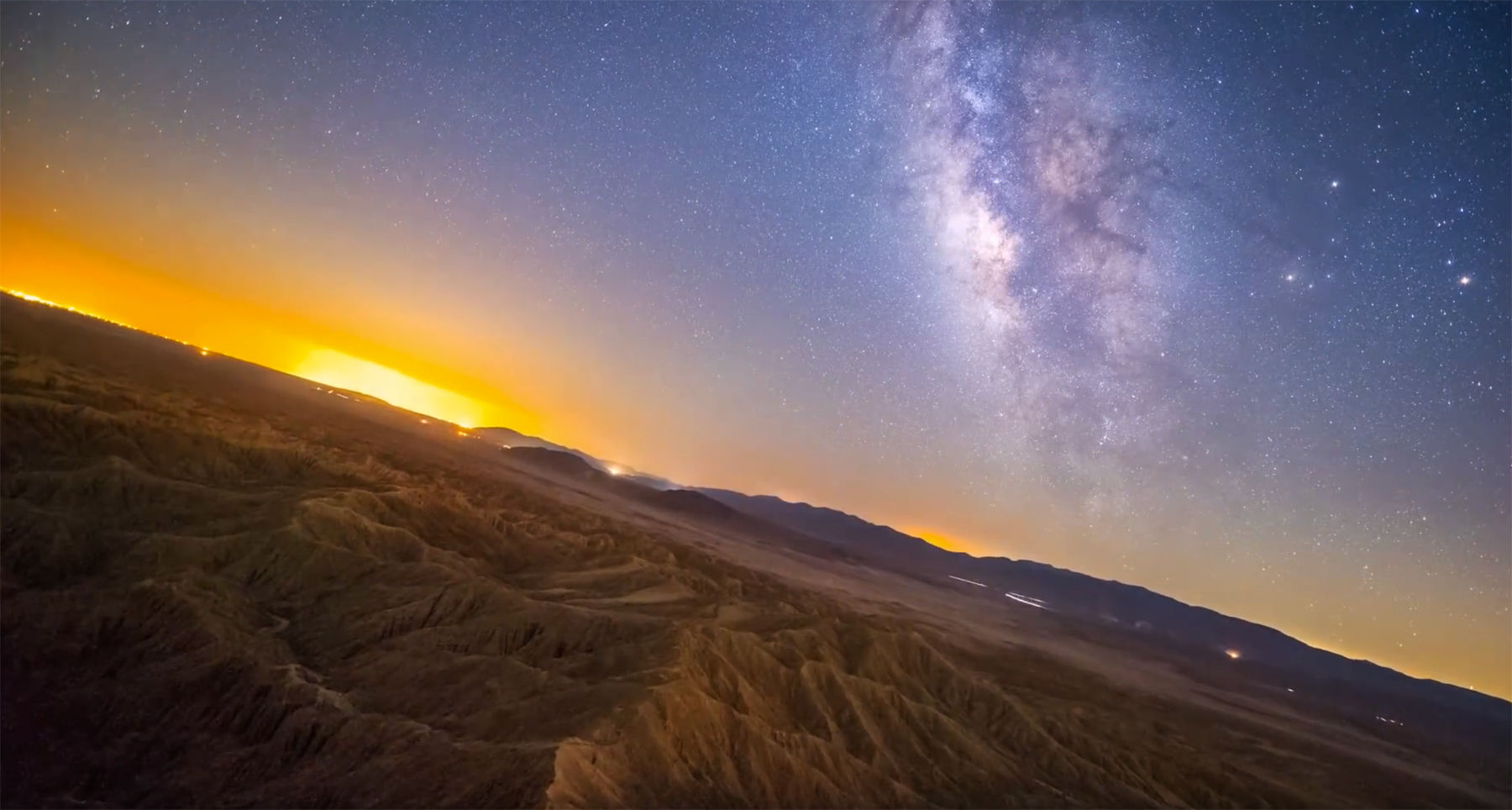From:

 www.syfy.com
www.syfy.com

Your world, unmoored
A time-lapse video set to follow the stars displays an unnerving view of the Earth moving, not the sky.
In most time-lapse videos of the night sky, the camera is fixed relative to the Earth, to the horizon, and — as they do to our senses, should we take notice for long enough — the stars in the sky move seemingly inexorably from east to west. Instead, though, Brummel turned the frame around, keeping the camera fixed on a spot in the sky, and, moreover, rotating the camera to match the sky’s orientation. Thus, as it more truly would be from outside our planet, we see the Earth’s motion, the horizon rotating as the Earth spins.

